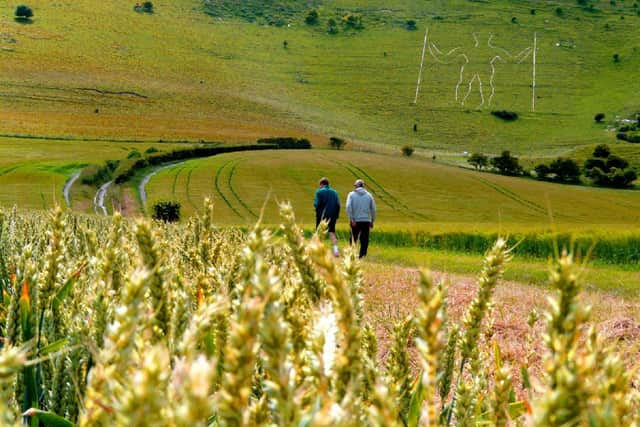Conservation Area: What to consider when buying in a conservation area
and live on Freeview channel 276
Being in a conservation area might mean that your house is affected by special controls (called 'Article 4 Directions').
The Home Owners Alliance says: ‘A conservation area is a designated area of historic and architectural interest. There are legal restrictions on what changes can be made to buildings, greenery and street furniture in order to preserve the unique character of the place. The first conservation areas were established in 1967. Now there are around 10,000 in the UK including estates, parks, stretches of canal, historic town centres and some entire villages’.
Advertisement
Hide AdAdvertisement
Hide AdHistoric England offers its tips for buying in a conservation area.


- Understand what is special about your building
Living in a conservation area does not mean everything has to stay the same. When making changes to your property you have to keep in mind conserving and enhancing its character and significance
- Think carefully about alterationsThink about how any changes will affect the wider character of the conservation area.
- Get to know the character of your areaIt’s not just buildings which contribute to the interest of your conservation area. The details of boundary treatments, such as walls and hedges, are just as important to its overall character.
Advertisement
Hide AdAdvertisement
Hide Ad- Look at Conservation Area AppraisalsYour Local Planning Authority may have undertaken an assessment of what’s special about the area your property is in. This may be helpful if you’re considering making any changes to your property. To find it, look for “conservation area appraisal” on your Local Authority’s website.
- Find out if your building is locally listedThese buildings make a positive contribution to local character and sense of place, but are not nationally listed. They’re offered a degree of protection by the local authority, which may identify them on a list of local heritage assets.
- Get planning permissionYou need consent for more types of work in a conservation area than elsewhere.
- Ensure you have consent for demolitionIn conservation areas you’ll need planning permission to demolish a building, or even certain gates, fences and walls. It’s a criminal offence to make changes to your home without the necessary permission.
Advertisement
Hide AdAdvertisement
Hide Ad- Check your local Article 4 DirectionsLocal councils sometimes add to the types of alterations that need planning permission by making an Article 4 Direction. These are used to protect features particular to an area from being lost without the need for permission.
- Get consent for work to treesYou need to notify your Local Planning Authority six weeks in advance if you plan to carry out certain works to trees. Find out more about tree protection in conservation areas(opens in a new window).
- Carry out regular maintenanceCarrying out regular, routine maintenance is essential to minimise costs and maximise the healthy life of your building.
Once an Article 4 Direction has been made, planning permission becomes necessary for changes. However it does not affect:
- repairs or maintenance
- like for like replacement
- any alterations which have already taken place, and
Advertisement
Hide AdAdvertisement
Hide Ad- painting or decoration (except of previously unpainted brickwork).
You should speak to your local planning authority. Look on its website in order to find out what specific restrictions apply to the conservation area that you live in. However, the general rules are that you cannot, without permission, demolish:
- A building that is more than 115 cubic metres.
- A gate, wall or fence that is over 1 metre if it borders the road or higher than 2 metres if not.
In a conservation area, you need permission for these alterations:
Advertisement
Hide AdAdvertisement
Hide Ad- Single storey extensions that extend more than 3 metres beyond the back wall of the house or 4 metres if the house is detached.
- Extensions greater than one storey.
- Side extensions.
- Roof extensions or alterations.
- Cladding in any material.
- Any new construction of sheds, outbuildings, swimming pools.
- Installation of chimneys, flues or vents at the front of the house or at the side if it faces the road.
- Installing satellite dishes or antennae that face the road.
Advertisement
Hide AdAdvertisement
Hide Ad- Fitting solar panels to the front of the roof facing the street than 150mm from the roof slope.
- Fitting solar panels that protrude by more than 150mm from the roof.
In addition, your local authority may have imposed specific rules on the conservation area that you live in. So, it is vital to check these. Such rules could restrict you from:- Replacing original windows or doors.- Altering the guttering or pipes.- Felling trees or shrubs.- Painting the facade or changing the colour of window frames and doors.
Although conservation areas mean some extra planning controls and considerations, these exist to protect the historic and architectural elements which make the place special.